Travelling Frog
Nuremberg, Bamberg, Regensburg
Two Bergs, one Burg. Nuremberg, Bamberg, Regensburg. An exploration of a Bavaria triangle.
2025 POSTS
Tony Leigh
1/6/202619 min read
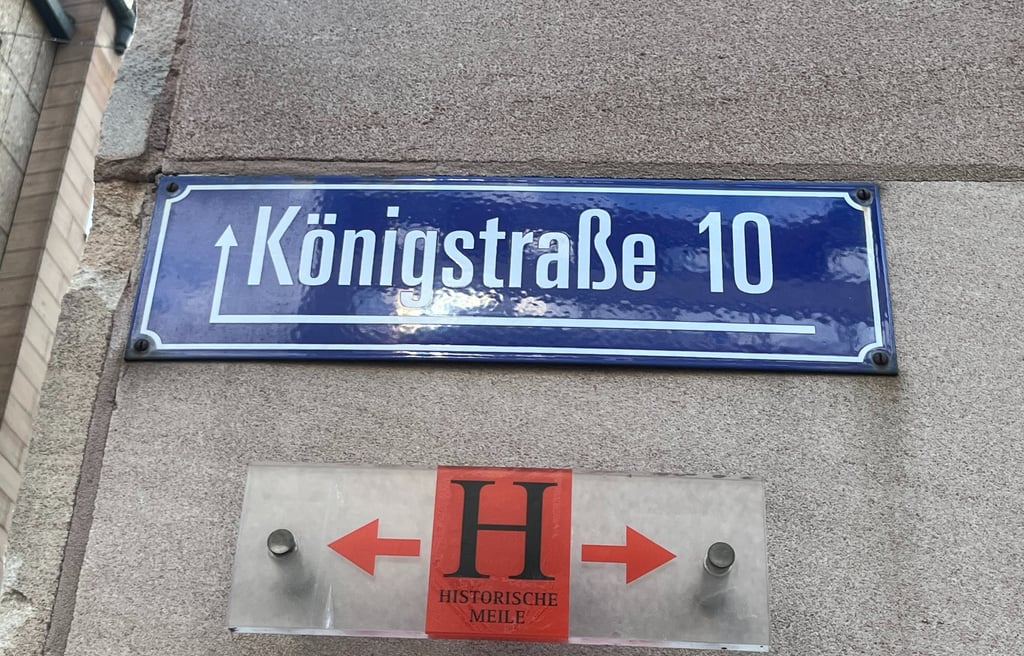

Nuremberg, Bamberg, Regensburg
Our Ealing home to clearing Heathrow Terminal 2 security, one hour. Probably a record. And the reason we favour the Elizabeth Line and Heathrow for our jolly jaunts.
A robotic cleaner - with a sex upped name - was causing some amusement and curiosity. This clever, and surprisingly cute, machine asked travellers to clear its path in order to complete its cleansing duties. Initially politely. I definitely heard frustration creep in.
Direct flights from Heathrow to London only operate for the Christmas markets period. Outside of these consumer binges 2 flights are needed. Into Frankfurt, out of Frankfurt. The Frankfurt flights were both short and painless. The in between bits, less so. One runway taxi, reminiscent of an M25 traffic jam.
Once landed, disgorged and happily reunited with one’s bag, we jumped on the U2, a cog on Nuremberg’s small but seemingly efficient metro system. To be fair, I only tested it once more. The return journey to the airport. Probably not a representative sample.
NUREMBERG - ARRIVAL
Our temporary home were the Brunnen Apartments. Central, comfortable complete. Equipped with a small but very serviceable kitchen. Invaluable for a week long stay. Check them out.
Once in, we were out. Our local ‘hood offered numerous tempting food haunts, many Korean or Japanese. Plus, my favourite, supermarkets. Two within a 5 minute walk.
No set agenda, meandered, toying with the old down. And discovered Bierwerk.
Sat outside and sipped a decent lager. Characterful inside, perhaps 10 taps mainly local lagers and beer. Fair enough. Bottles and cans available, showcasing a greater variety. Food also available. Worth a stroll, if not necessarily a hop head destination.
It was early evening, we were knackered. Back to the hotel, slept 10 hours.
Brief History
Nestled in Bavaria, Nuremberg Kaiserburg (castle) first appeared in the 11th century. Constructed, not as an apparition. Free Imperial City status was granted and city walls were erected in the 13th century. Probably not a coincidence. Growing economic power, wealth and, presumably, taxes inevitably followed.
The 13 and 14th centuries saw the construction of gothic masterpieces such as St. Lawrence Church (1298), Frauenkirche (1361) and the Luginsland Tower (begun 1377). In the 15 and 16th trade booms, wealth accumulated, city walls reinforced (wise). Nuremberg, centrally located, had become a European trade hub.
Early in the 19th century Nuremberg loses its Free Imperial City Status as Bavaria goes all ‘Borg’ and assimilates the city. Ironically, parts of the original city walls are destroyed in the 18th century to allow expansion – sounds vaguely familiar.
Nuremberg, in the 19th century, witnessed a revival of interest in medieval art and architecture, leading to restoration of the castle. Many of the still surviving neoclassical building flourish during this period. Paradoxically, perhaps, Nuremberg also becomes a major industrial centre for mechanical engineering and electrical equipment.
NUREMBERG PROPER
Suffice to say, this wasn’t our earliest start.
Sus Christmas marketed Nuremberg a few years ago. It’s is a tad warmer. As I write, just shy of 30 degrees.
I’ve dallied with visiting both Nuremberg and Bamberg for too long. With chum Mike. For the beer. Bamberg, in particular, is a renown centre for German beer production. Numerous brewpubs dot the city. A tad ironically, a recent and fascinating employment jaunt within the wine industry delayed my beery Nuremberg plans. Beer is in a few days, now is for tourist.
As many will know, Nuremberg was tragically bombed, for the people who live here and the architecture they populated, by the allies during WW2. War, that’s a great idea.
The old town has been restored to its medieval glory – 90% of the old town perished. The merits of which can be argued. It generates tourist pounds, dollars, euros. Perhaps even creating a more favourable environment in which to live. Certainly beats 70s tower blocks. Done that, didn’t work.
After some searching we found Kettensteg (The Old Chain Bridge), constructed in 1824 and the oldest European example of its kind.
Riverside vistas, the Pegnitz river is a constant and welcome companion, birdlife and the odd fish all add extra adorability. A remarkable transformation considering the river was once heavy polluted due to waterside industries.
The Thames has undergone a similar transformation and now considered one of the cleanest metropolitan rivers in the world. Don’t be deceived by its murky appearance. Remarkedly, 100 plus fish species now call the Thames home.
Further directional confusion brought us to Weißgerbergasse (Tanner Lane). With its half timbered houses, cobbled street many consider Weißgerbergasse Nuremberg’s most iconic street. Built on the wealth of Nuremberg’s medieval leather industry Weißgerbergasse now hosts cafes, bars and restaurants.
At the top of Weißgerbergasse is St Sebald’s Church. Constructed in the 13th century in the must have Romanesque style and supplemented in further centuries. Including the always popular 17th century Baroque. It suffered serious damage during WW2 and, like much of what we saw, has since been reconstructed.
Sebald, the man, actually financed St Sebald’s and, literally, helped to build it. Buried there too. Must have loved that church. Popped in. Popped out. Worth a glance. There are no Cathedrals in Nuremberg. Likely due to the embrace of Protestantism. Over time most Nuremberg Catholic churches have been converted to Nuremberg Protestant churches.
Nuremberg Altes Rathaus (town hall) was again built in the 14th century including a great gothic ceremonial hall. Again it was smashed to smithereens. Again it was painstakingly rebuilt post WW2.
Next up, Platz am Tiergärtnertor, a straight run from Altes Rathaus. An attractive square with classic medieval (reconstructed) architecture. The square is a popular place to enjoy a beverage or two and lively later on.
One oddity is Das Hase, a tribute on an Albrecht Dürer picture of a young hare. Not something you would wish queueing behind you at Tescos. And hidden by the larger tree on left of photo. Some would say a positive.
Abrecht was born, lived and died in Nuremberg and is one of their most famous sons. It’s possible to visit the house he once lived in, one of the few surviving burgher houses from Nuremberg’s golden age. Now a museum.
There’s also tours of the WW2 art bunker where Nuremberg, sensibly, stored many of its art treasures during the allied bombing.
The Kaiserburg (Imperial Castle) looms large directly above Platz am Tiergärtnertor. It’s a castle with baggage. Fascinating baggage. It has links to the Holy Roman Empires, assorted kings and the Nazis.
Kaiserburg dates back 1,000 years. Trashed in the 15th century, rebuilt in the 19th century, trashed (yep, WW2) and rebuilt in the 20th century. Remarkably some Romanesque and gothic elements survived. You’re able to wander the large courtyard for free. Which we did. Payment grants access to inner rooms. Which we didn’t. Another time.
Nuremberg was Hitlers favourite city. Not a ringing endorsement. He felt it was the most German of German cities. Hence the rallies. Hence the bombing. Hence the Nuremberg Trials. The latter to crush any symbolism Nuremberg might hold.
We toddled into Bierothek, a craft beer take out place only. Both traditional and not so traditional ales though no refrigeration. Worth a look.
Completed our Nuremberg exploration in a supermarket. Where else. Returned to hotel, rested before a short wander to Aztoria Wine.
Then another supermarket, a sausage sandwich for me, something healthy for Sus.
Large windows in our hotel opened affording a snoopers view of the pedestrian, shopping street one floor below - Breitegasse. A street for posturing, preening, chatting, sitting, watching. A place for teenagers, those from a decade later, friends and families. A wonderful spectacle. A human safari.
We ate, people watched, watched people, people watch. No one looked up. They rarely do. A regular morning and evening ritual.
Bamberg
Bamberg was largely spared the allied bombers as strategically irrelevant to the war effort. There’s an insult in there somewhere. UNESCO, those cheeky cultural curators, have awarded Bamberg World Heritage Site status. Deservedly. It has over 1,300 listed buildings.
Bamberg, nestled in Bavaria, was first gossiped about in 902. A fort had been built exciting locals. Yesterday’s fort, today’s Cathedral Hill. Domplatz. A century later (1007) Bamberg rose to prominence when Emperor Henry II established a bishopric. This transformed Bamberg into a spiritual and political hub of the Holy Roman Empire. Nicely played Bamberg.
By the 12th century the town had developed and flourished economically, architecturally and culturally. Its bishops becoming imperial princes in the 13th century, further cementing power and influence. The 17th and 18th centuries again brought benefits to Bamberg. And though remaining Catholic throughout the Reformation Bamberg embraced the Enlightenment attracting original thinkers of the time. Baroque architecture flourished.
With its loss of ecclesiastical independence in 1802 Bamberg was indecently quickly consumed into Bavaria. Yummy.
Nevertheless, the 19th century witnessed population growth and canal and railway expansion leading to improved trade and connectivity. And greater prosperity.
We were on a train to Bamberg by 10am. As we’re most of Nuremberg. Dressed in traditional lederhosen. Most supping on an ale. Probably not their first. It would shock a hardened footy fan travelling to an away game.
I asked a lovely chap why. Apparently, a beer crawl across various cellar based drinking establishments in Erlangen. The train emptied at Erlangen. Some may not make it back. Possibly not out of the station.
The journey, around 45 minutes, was straightforward. The journey pretty in parts, non-descript in others. No airport exists in Bamberg, Nuremberg is the closest airport and city.
The ‘Bayern’ ticket, on advice the helpful Hapbahnhof staff, cost €25 for both, for 2 days. Unlimited travel within the Bayern environs. Bargain.
Our initial plan was to discover Maximilianplatz. This largely 18th century square, with the 19th century Maximilians Fountain centrepiece, is Bamberg’s largest and most significant. It appeared to be an ideal place to start.
Didn’t happen.
An unintentional detour deposited us in an agreeably local neighbourhood. A local cafe dispensed coffee and cake. We sat outside, watched local traffic, watching us, watching them. Buses wandered by at surprisingly regular intervals. Local bus services are alive and well and apparently living happily in Bamberg.
Yet again missing the now mythical Maximilianplatz we discovered Domplatz. Where to start.
Domplatz - or Cathedral Square as it’s sometimes known - hosts some of the most significant structures in Germany let alone Bamberg. It’s cultural, historical and really, really quite magnificent.
Bamberger Dom - Bamberg Cathedral - is perhaps the darling of the Square. Constructed in the 13th century in the Romanesque style with later Baroque additions. Due in part to fire. We did quickly visit, the sheer size is striking. Trouble is, it’s again just another church.
Neue Residenz, adjacent to Bamberger Dom, completed in the 17th century (hence the ‘new’) was home to the Prince Bishops of Bamberg until 1803. The rose garden is reportedly a highlight. It contains over 40 ornately magnificent rooms. Religion appears to have been replaced up extravagant living. I'm sure the poor would have approved.
Alte Hofhaltung, or old court, constructed in the 16th century replaced older constructs lost to fire or demolished. It also house those lucky Prince Bishops before relocating to Neue Residence.
Completed on 1733 the Diozesanmuzeum, next to the Cathedral, was once a Jesuit College. It now houses a vast collection ecclesiastical art spanning several centuries including relics and manuscripts.
Some buildings are possible to visit. We didn’t as not our cup of ecclesiastical. However, if your cup of ecclesiastical, the museum will be deserving of your time.
From Domplatz, towards Kloster Michaelsberg, one might find oneself visiting the 1,000 year old Jacobskirche. Bit of a survivor this one. Renovated in the 13th century, sighted for demolition during Bamberg’s secularisation, it still welcomes visitors and worshippers to this day.
Kloster Michaelsberg (St Michael’s Abbey) is, inevitably, a bit of a climb. Located on one of the 7 hills of Bamberg. The temperature was hovering at a skin frying 30 degrees Celsius. Those monks were a selfish bunch. It was undergoing renovation on our visit - a wedding held in the brewery must have wrangled a good deal.
The monastery dates back to 1015 with the 12th century St Michael’s Church a particular highlight. Later Baroque buildings, including afore mentioned brewery, add to the architectural ambience. Though unable to enter, and with scaffolding inconveniently positioned, its magnificence is not diminished.
Ambling down, desperately seeking shade, we spotted a stork nesting on a small tower of a large residence. Its mate was flying gracefully above and soon to join its wife/husband. The nest was the largest I’ve seen. The storks huge, beautiful with a hint of dinosaur. We even spotted beaks of the young being fed. An absolute privilege. Thanks guys.
From storks to early medieval fabulousness. Bamberg Old Town. As smooth a segway as you’ll ever see.
Bamberg Altstadt is an architectural gothic mediaeval, masterpiece. With Baroque embellishments. Fairytale half-timbered houses, secular and ecclesiastical edifices all shouting ‘look at me’. There’s even the odd bit of Roman ruin. Remember to look up. This helps to negate the same old, same old restaurants, tourist tat shops and fast food joints. Classier shopping establishments also available.
One particular must see is the Altes Rathaus (Old Town Hall). Constructed in the 14th century and liberally coated in frescoes (very Baroque). It actually rests on an artificial island in the River Regnitz. That cheeky little sister of the River Pegnitz. The family resemblance is remarkable.
My advice is to just aimlessly wander. No set agenda. Just meander. Until you pass the Altes Rathaus for the third time. It’s that kind of place.
Brewpubs also dot the city. More on these cheeky chappies a couple of days on.
Finally Maximilianplatz. Oh dear, bit of a disappointment. It’s a large and attractive square – likeable even – but sadly lacks the character and personality of the rest of the town. If discovered first, perhaps with a market, we may have formed a more favourable view.
From Maximilianplatz we strolled back to the train station. It’s worth remembering Bamberg Altstadt is a 10-15 walk from said train station.
Bamberg is an absolute must see. A fabulous, fairytale masterpiece. And to any traditional German fan, this is mecca. The must see sights (Altstadt, Domplatz) can be seen in perhaps half a day. However, a couple of days would better do Bamberg justice.
REGENSBURG
Happened accidentally. And expensively. Our intention was to go to Furth, a mere 7 minutes away on our still valid ticket.
I mentioned Regensburg, and before you could say ‘wrong train’ we were moving.
It was an ICE service. A cross continent train. Cost us £40 one way. Each. On the plus side, it was quiet, comfortable and fast. And the toilets were nice. Though I never worked out how to lock them. As one poor chap discovered.
A kind hearted passenger agreed to purchase tickets and we pay him back in cash. The guard had asked for volunteers. It’s bizarre no facility for onboard payment was available. Either for tickets and/or fines. Presumably, tickets need to pre-booked.
The calming vistas of rolling, wooded hills, farmland and pretty villages soothed away the financial pain. Sus was calmness personified.
Once Regensburg came into view, chum guard made sure we knew. And quickly exited his train. We didn’t part friends. Can’t blame him really.
Brief History
Regensburg was founded as a Roman fort called Castra Regina in 179 AD. The later medieval period was generous to the city. It became a significant medieval trading centre and Bavaria’s first capital.
In 1245 Regensburg achieved self-governance as a Free Imperial City. Go Regensburg.
From 1663 to 1806 Regensburg also served as the location of the Perpetual Imperial Diet effectively becoming the Empire’s political heart.
1810 saw Regensburg eaten by Bavaria. Bit of a muncher that Bavaria. Though damaged by a careless Napoleon Regensburg retained much of its medieval character and earned UNESCO World Heritage site status in 2006.
The rest is history.
Regensburg Rumble
As with Bamberg, strolling from the train station to the properly pretty parts takes between 10-15 minutes. The Old Stone Bridge, dating back to the 11th century, is oldest preserved bridge in Germany. A medieval masterpiece. Quite beautiful.
The 12th century, gothic St Peter’s Cathedral is a focal point of medieval Regensburg. We did have a peek. The 13/14th century stained glass windows are especially memorable. Even if the message is less so. The roof is gothic gorgeous. A Gothic ribbed vault was an 15th century addition.
Unfortunately, the dosh ran out in the 16th century and the twin towers were not actually completed until the 19th century. Whoops.
Porta Praetoria is the remnant of Regensburg’s Roman gate. It’s been cleverly incorporated into a later building and simple to stroll nonchalantly past. I did. Sus spotted it. Perhaps a little underwhelming. Thankfully, Regensburg’s good bits are conveniently walkable, so equally simple to discover by chance. All hail serendipity.
The Altes Rathaus has both gothic and medieval elements. We actually explored a couple of the rooms that were open to the public. A more comprehensive tour is available.
The Historisches Museum Regensburg is housed in a 13th century monastery. Those mischievous monasteries get everywhere. We didn’t partake. Nonetheless, with artifacts ranging from the stone age to the more modern, given the time we may well have.
It had started to rumble with thunder. Huge rain drops menacing tourists. We made a dash back to the station. Arrived dry, caught the next train back to Nuremberg.
A couple of confessions. I’m scribbling my Regenburg musings a couple of weeks after returning. Everywhere else, notes were taken at the time or soon after. And, before this streak of honesty moves on, we probably didn’t do Regensburg justice. For example, there’s Schloss St. Emmeram, Thurn und Taxis. A Rococo castle built atop a medieval monastery. Sounds like a cake. Which we neither ate or saw.
Regensburg is deserving of your time. A few hours is all you need. However, to properly acquaint oneself, make a day of it. This medieval town will thank you.
NUREMBERG – PROPER, PROPER
A slightly lazy start, 3 days of heat and wanderings had taken its toll.
We weaved down the more modern Köningstraße and more modern market - fresh produce, artisan nibbles and obligatory sausage stand. The Pegnitz gurgles happily to itself close by.
Narrenschiffbrunnen, or the less enticing ‘Ship of Fools’ Fountain, sits oddly on Köningstraße. It’s a modern sculpture based on a much older (1494) book of satires. Merits a glance.
We continued our weave down to Hauptmarkt of Christmas market fame.
Nuremberg was once 2 towns separated by one river. Naughty Pegnitz. Hauptmarket became the city centre of this particular universe when the 2 towns merged in the 13th century. As mentioned Nuremberg sat – and presumably hasn’t moved since - in the centre of Central Europe. And, during the medieval era, became a major trading hub. Location, location, location. The city even dabbled with the Silk Road. Cheeky.
Back in the 13th century, the idiots (men) needed the land for a new town market. The Jewish settlers had turned a swamp into a settlement. They were banished, about 600 were killed in a pogrom in one night. Or 10% of the then population.
Being the self-important men they believed themselves to be, this was easily justified. Isn’t it always. The fact the Jews had become the city’s main money lenders may also had a bearing. All debt was cancelled. And Frauenkirche, nearby, was constructed during the 14th century on the site of a demolished synagogue.
One of the most notable features of Frauenkirche is the Männleinlaufen, a mechanical clock celebrating the Golden Bull of 1356. Holy Roman Empire not an award for fibbing. A Imperial Diet was the deliberative body of the Holy Roman Empire. Power and prestige came to any city granted an Imperial Diet. Nuremberg was well chuffed.
Whilst admiring Frauenkirche - and waiting for the mechanical clock to put on a show - we spotted one of those popular free tours. We went over, asked if it was in English, it was, we joined.
We spent an enjoyable couple hours plus with latest chum, Martin. And a small ground of similar minded souls from various bits of the world. One lady had arrived from India only the previous evening.
Though much of the tour covered previous explorations, it added both history and useful context. Some I’ve since incorporated into this blog. It also introduced us to sights we’d missed or missed their significance.
A WW2 survivor is Schöner Brunnen a 14th century fountain living in Hauptmarkt. It translates to Beautiful Fountain. Subtle.
It’s modelled on a gothic spire dotted with statues of religious and town worthies. Tad presumptuous. Doubtless said worthies paid for the privilege. At 19 metres tall and brightly painted it’s an easy tick off. A gorgeous wrought iron fence was erected around the fountain, by a lovelorn local craftsman, in the 17th century. I’m rather fond of a bit of wrought iron. Preferred it to the statue.
The wonderfully named, single arched Fleishebrücke (meat bridge), was constructed in the 16th century. It’s rumoured to be modelled on the Rialto Bridge in Venice. It also miraculously survived the carnage of WW2.
This area sold meat, good, bad and quite possibly lethal. A small river island, visible from the bridge, was where the nasty stuff was sold off cheaply.
St Lorenzkirche (St Lawrence) church was begun in the 13th century, the magnificent west facade in the 14th century, the twin towers in the 15th century. The west façade survived WW2 as purposefully protected with concrete blocks. Much of the rest wasn’t so lucky.
We visited post tour. It possesses a strange juxtaposition of Catholic and Protestant (converted from the former to latter). It works. Genuinely one of the most striking church interiors we’ve seen. And we’ve seen a lot.
The 3 piece organ is one of the largest anywhere. And who wouldn’t want a 3 piece organ. A chap was rocking some tunes (in an ecclesiastical kind of way) for a short time during our visit.
Anyway, did some light supermarket shopping before heading back to hotel. Out again, meandering mainly down by the river, for a couple of hours.
Our evening routine. With wine.
SUS’S BIRTHDAY
Was the following day, 17 June.
Relaxed morning before a climb back up to the castle. There have been many harder castle climbs over the years.
Martin, our guide from the day before, had suggested climbing the Sinwellturm Tower and checking out the castle well. He appeared less enthusiastic concerning the castle interior.
Accordingly, we bought tickets for the well and tower only. And timed it perfectly for a well talk. Never realised a chat and demonstration relating to a 14th century could be so fascinating. Shout out to the lady guide.
Sinwellturm Tower is, miraculously, another 14th century survivor. One does wonder how they missed. It is a bit of a clamber up via wooden stairs though the offered vistas are fabulous. However, the most poignant moments came from period photographs demonstrating before and after the allied bombing. Heartbreaking.
Four Euros gains access to both. Recommend splashing out.
The afternoon was spent in Achtzehn97, a wine bar in a Nuremberg suburb. Decent wine, interesting food, lovely staff.
Sus goes home, Tony goes to a beer festival
Post Brekkie, we walked to the train station. Sus left for the airport, I returned to Bamberg to meet chum Mike.
His first time so strolled the old town, and returned to the glorious Domplatz. Bamberg is undoubtably suited to a second visitation. Me and Mike strolled streets me and Sus hadn’t. The waterside Fisherman’s Cottages were a particular delight. Time well spent reacquainting myself with this beautiful city.
Brewpubs next. First up, Schelenkerla for their famous smoked beer. Surprisingly good. Very good in fact. Cynically, my first thoughts were a gimmick. Tempt tourists in, sell them an average product so they could take photos (OK, we did) and boast to chums back home (yep, did that too). I was wrong. Yes there was a touristy element but plenty of locals too. And most importantly, the famous smoke beer lived up to the hype.
Same result at second brewpub, Klösterbrau Bamberg. Another cracking ale. Very local, very good.
Only half litre served in both establishments. No tasters, no thirds, no halves. Probably too many tourists asking too many annoying questions.
Rushed back to the station, returned to Nuremberg for the Fränkisches Bierfest. Said beerfest is convivially convened in the Imperial Castle moat. A most splendid, perhaps even baronial, backdrop.
Supposedly, one of the longest beer festivals anywhere. According to chum Mike. Having strolled the length of it I’m inclined to agree. Traditional beer dominates. Supped a couple, agreeable without being distinctive. And, as with Bamberg, half a litre only serving size option.
Oddly, and a little awkwardly, a deposit was paid for a glass. But said glass needed to be returned to the same brewery for said deposit. Same again with each following brewery. Each style has its own unique glass. As did some breweries. Mike was reprimanded for daring to be different and used the wrong glass for the wrong beer. Naughty boy.
We sank a couple of beers before going separate ways. Mike was staying with family a little outside Nuremberg in Erlangen.
CORPUS CHRISTI DAY
This year, falls on the 19th June. Today. My trip for a healthy breakfast was somewhat curtailed as very little - less than even a Sunday - is open. Including supermarkets. Where my healthy breakfast resided.
As the day progressed, a greater number of bars and restaurants opened their doors. Supermarkets and hight street shops remained closed.
Meandered accidentally (really) into the red light district getting a couple of half hearted hellos from the ladies. Not sure who was more surprised, them or me. Sus and I had toyed with the edges of the red light district a few days earlier. Without realising. Nightclubs, bars and pole dancing joints. Not my cup of entertainment.
Beat a hastily and welcome retreat to the less seedy part of town. Explored a little more before heading back to hotel and scrape together breakfast.
More meandering, a bratwurst bap, before a second visit to the bierfest. Connected up with chum Mike around 2 pm. Plus new chum Gregor, a relative Mike was staying with. Top bloke and, helpfully, knew his way around the breweries.
We saw a few punters with considerably smaller steins. Perhaps half a pint. Gregor asked and apparently these were available, and for a discount, could be filled halfway or to the top dependent on the brewery. Perfect.
We grabbed a couple and set about sipping. Guided by Gregor. Our very own German beer sommelier. Beer, conversation and bladders all flowed. A fabulous afternoon and early evening.
The beer festival was free, the toilets €0.50 a squirt. Probably made more money than charging entrance fee. Talking of water - kind of - no free wet stuff is provided. According to Gregor quite common though slowly starting to change.
Mike and Gregor went onto a rock bar for a couple of hours. I politely declined. My limit had been reached and flying home the following day.
Home
Not much to say. Checked out our Hotel, wandered hindered by large suitcase before U2 Metro and airport.
OBSERVATIONS
Most high street shops a supermarkets are closed on Sundays. As are many bars, cafes and restaurants. Nevertheless, plenty of bars, cafes and restaurants are open, particularly in and around the train station.
Some stay closed on Monday.
Metro tickets are purchased from machines. No barriers, no checks, a singular lack of interest, in whether we paid or not. We did by the way. Hamburg was the same. Fines for non-payment occur so best to purchase viable ticket. You know, the one time you don’t……
More people smoke, less vape.
Public toilets are not free. Prices range from a pee inducing €1.50 to a more reasonable ‘let’s go again’ €0.50.
CONCLUSIONS
We’re unapologetic Europhiles. Brexit, an awful name for a worse idea. So it will come as no surprise we rather enjoyed our time in Germany.
Nuremberg has an incredibly laid back and relaxed vibe. More than many other large cities we’ve visited. As already remarked, this may be related to the rebuilding its medieval heart. Whatever, it proves a delightful spot to stroll, sip a coffee or relax with an ales or two. A long weekend should cover most of the basics.
You may decide to linger in Bamberg or, alternatively, visit from Nuremberg. You should do one. Bamberg is a gem, worthy of an overnight stay. And for any beer buff Bamberg is mecca. I’m toying with popping back at some future point. Lingering for a few days to better study and understand the cities’ beer culture.
Regensburg is another worthy destination. Nevertheless, if only one can be visited, it should be Bamberg.
Many thanks for reading, Tony (July 2025)
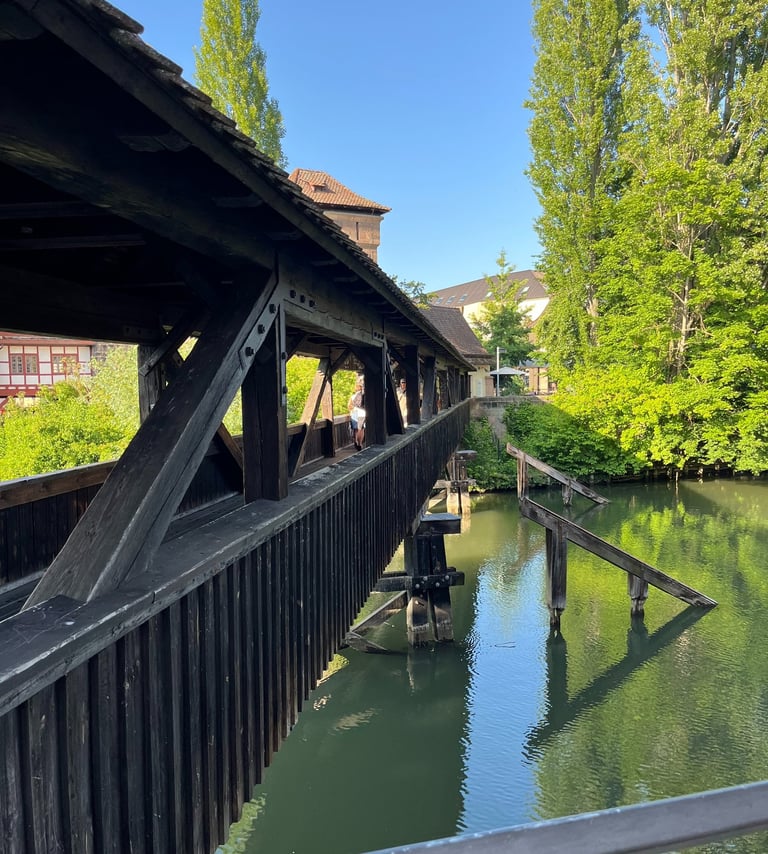



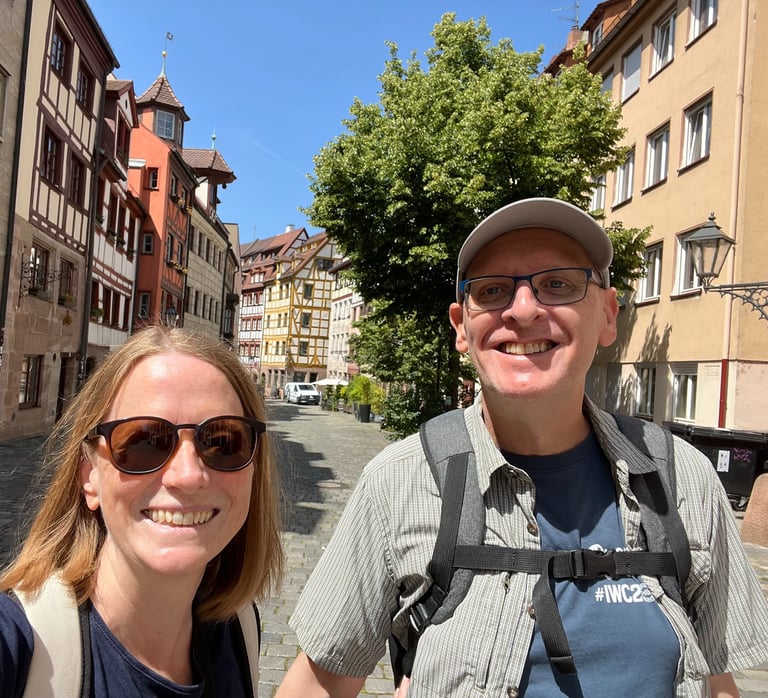

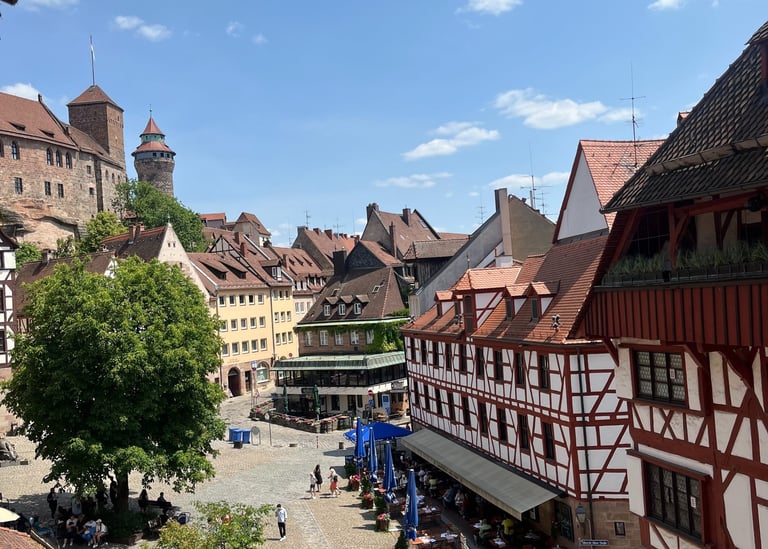

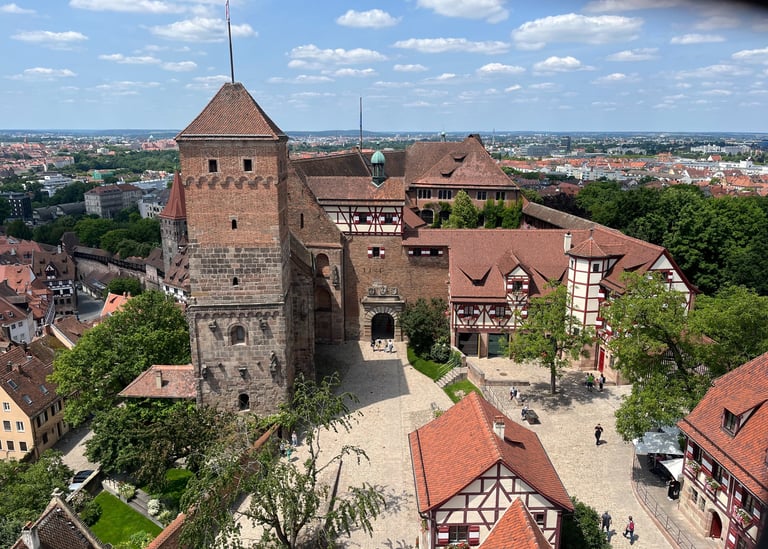



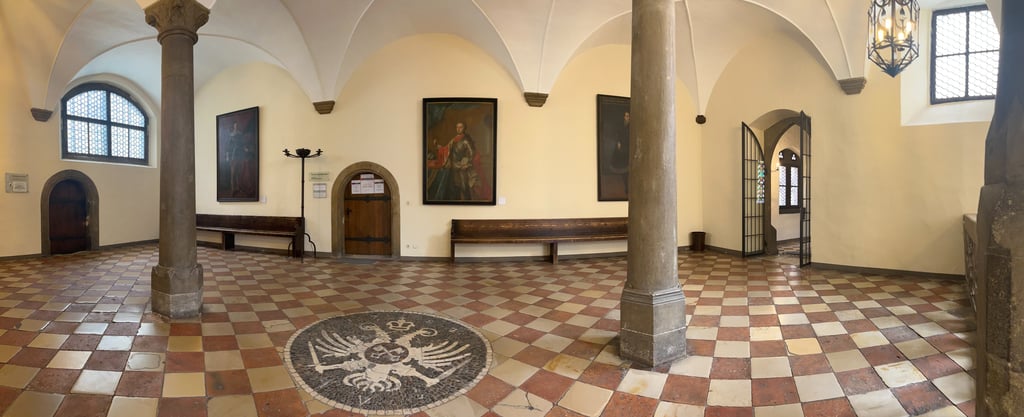

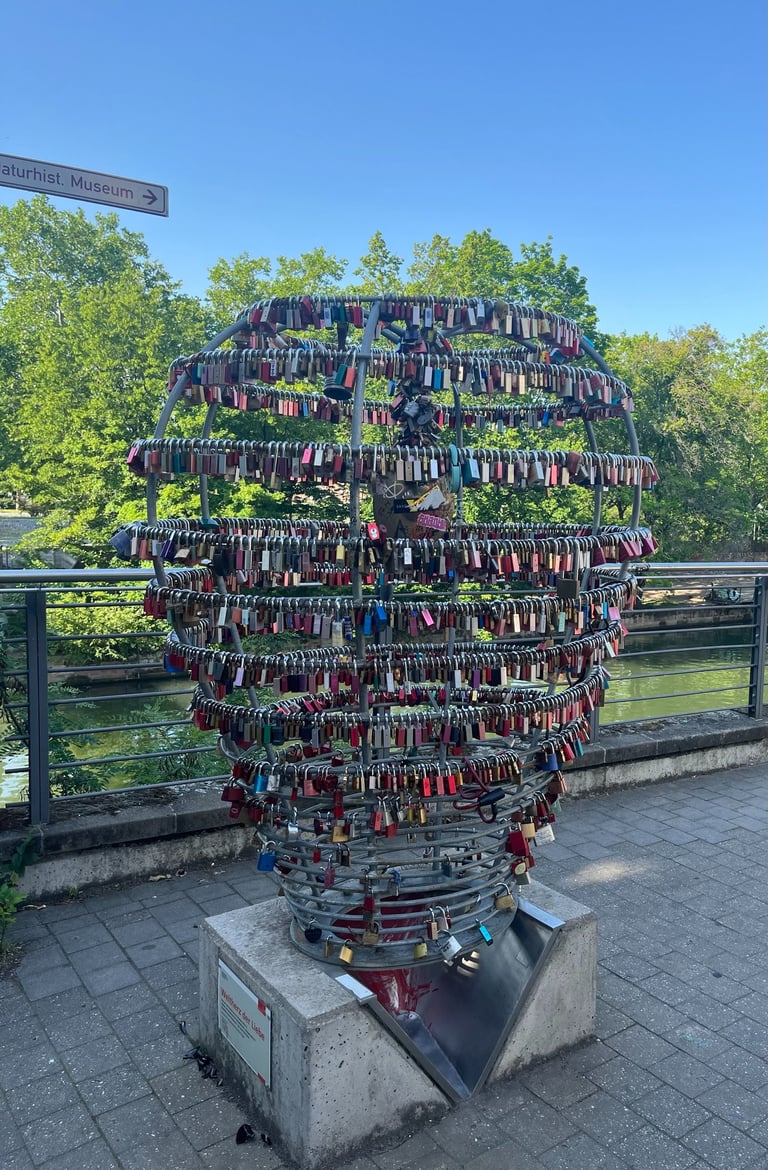



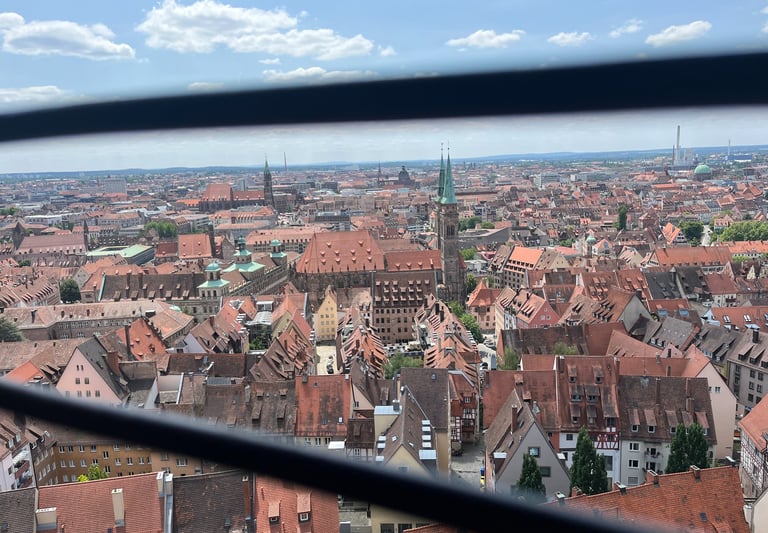




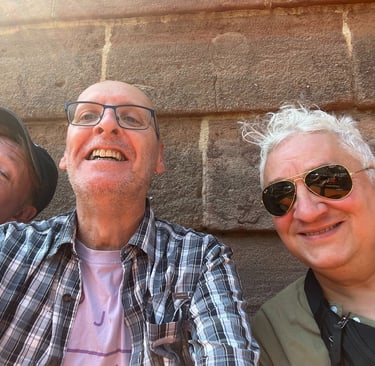
Explore
Travel from a more mature perspective.
Discover
tony@travellingfrogblog.co.uk
© 2025. All rights reserved.